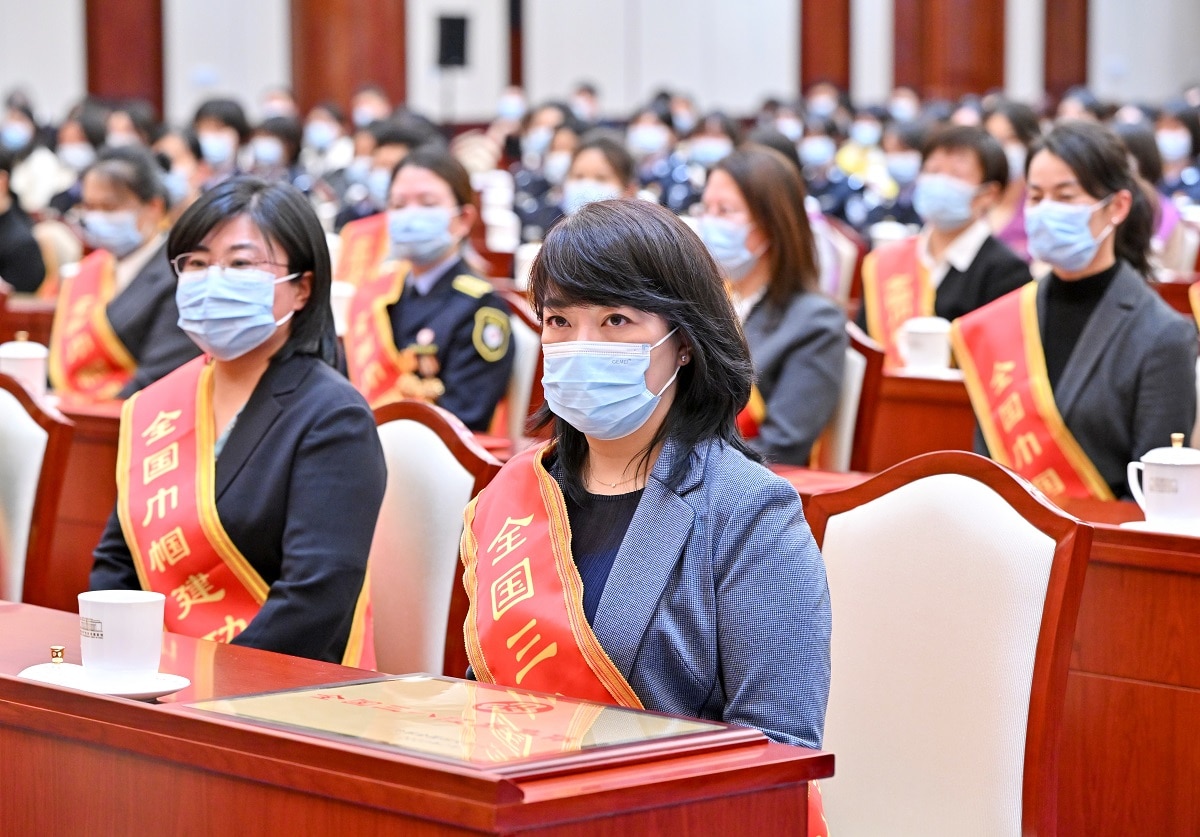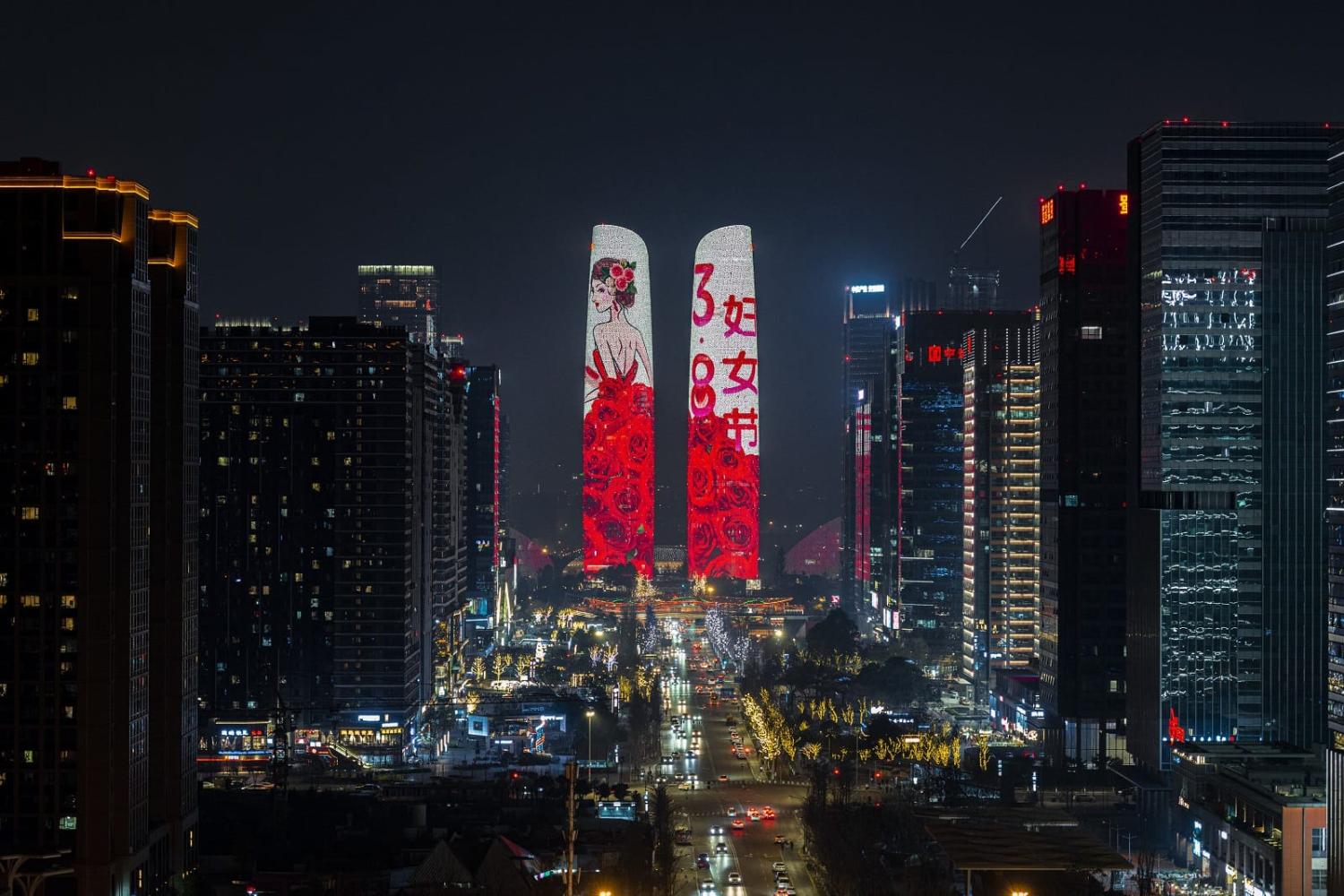As China grapples with population decline, the pressure on women in China is only increasing. Under paramount leader Xi Jinping, women’s rights continue to deteriorate as the state pressures women to have more children to arrest the decline.
Gender equality has always been a central part of the messaging to women by the Communist Party of China. “Women can hold up half the sky,” Chairman Mao famously declared. Every International Women’s Day this is repeated in government propaganda.
However, the reality is different. Women’s rights in the party’s strategy have not emerged out of respect for human rights and individual choice. Rather, women are primarily viewed as a resource to be deployed for the benefit of the party state.
Since early Communist rule under Mao Zedong, women have been regarded as a source of labour, an important economic resource for the growth of the country. China’s female labour force participation rate was high under Mao.
With economic liberalisation under Deng Xiaoping, women as a source of labour remained a party focus. Women were among the early waves of migrant workers from rural to urban China. They were employed in garment factories for their nimble fingers and worked as maids and cleaners.
Women’s participation in the workforce has subsequently improved gender equality. Men are no longer the sole breadwinners in the family. As social status tends to come from income or wealth, women’s overall social standing has grown. Yet despite some improvements, such as strengthened rules on gender discrimination in hiring practices, progress has stalled and enforcement of laws against discrimination is sporadic.

The relatively high workforce participation rate among women in China has not led to more political power. Women have been missing from the top party leadership from the very start. The seven-member Politburo Standing Committee, which makes the most important political decisions, has always been comprised of men. For the first time in decades, the 24-member Politburo announced last year that it had no women. In the 205-member Central Committee, only five per cent are women.
Major policy decisions affecting women have mostly been made by men. The one-child policy, which took effect in 1980 and impacted the life of nearly every woman in China, was designed by male engineers. Under this policy, which lasted until 2015, forced abortion and forced sterilisation of women were common, while forced sterilisation of men occurred at a much lower rate. The party-state controlled women’s bodies to achieve its goal of lowering the national fertility rate. Women’s rights and choices were cast aside in pursuit of what the party believed to be the greater good of China’s long-term development.
Now that the birth rate in China has plummeted, the party sees women as central to population growth. This shift will likely erode the progress made in gender equality. While women are still expected to participate in the labour force, the party now puts an emphasis on what it calls “traditional gender roles”. This includes the use of social pressure and propaganda to encourage women to have children. Official Chinese media promotes the idea that women will find fulfilment through marriage and motherhood.
Yet browsing through the social media spaces dominated by women, it is evident that many young females are not convinced by such propaganda. Instead, many express the view that marriage would lower their living standards, as they would be expected to do all the housework and most of the child-raising, as well as looking after their husband’s parents.
Such sentiments can be easily found in online discussions and forums – thus far permitted by the Communist Party. But the party has cracked down on organised forms of feminism. It is worried about feminism as a mobilising force for anti-government protests.
If and when social pressure and propaganda prove ineffective in convincing women to have more children, the party will consider other means. For example, it could introduce social policies to reduce the cost of child-rearing, such as free education, as have been recently proposed by a National People’s Congress delegate.
However, as it has done before, the party could also resort to more coercive means, such as controlling women’s bodies to achieve fertility targets, which would lead to further erosion of women’s rights.
The future for gender equality in China looks grim. The only sustainable way for women to achieve equality is through more political power. Yet the Communist Party is a patriarchal organisation, increasingly espousing traditional values and gender roles. It is not pursuing gender equality and women’s rights as a political goal beyond rhetoric.
As we reflect on International Women’s Day, it is crucial to remember that gender equality should be based on respect for human rights. Women must have control over their bodies and access to political power. Without these, there can be no sustained progress.

